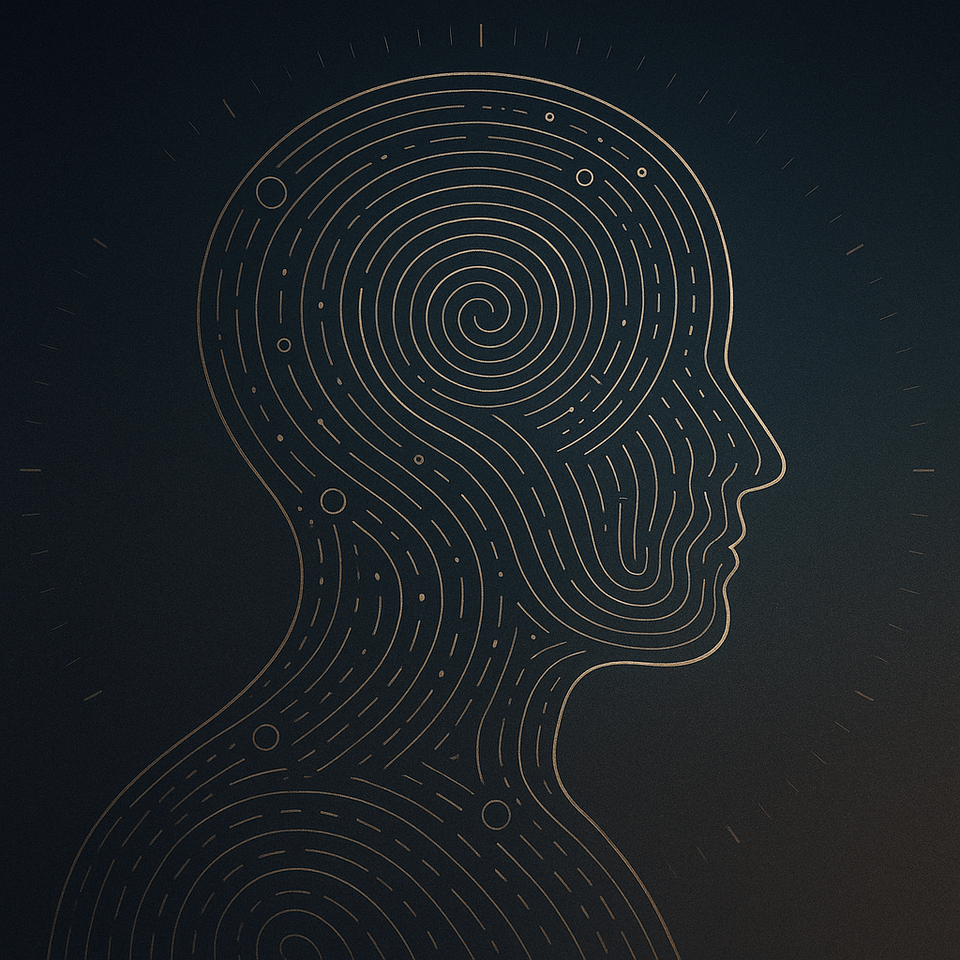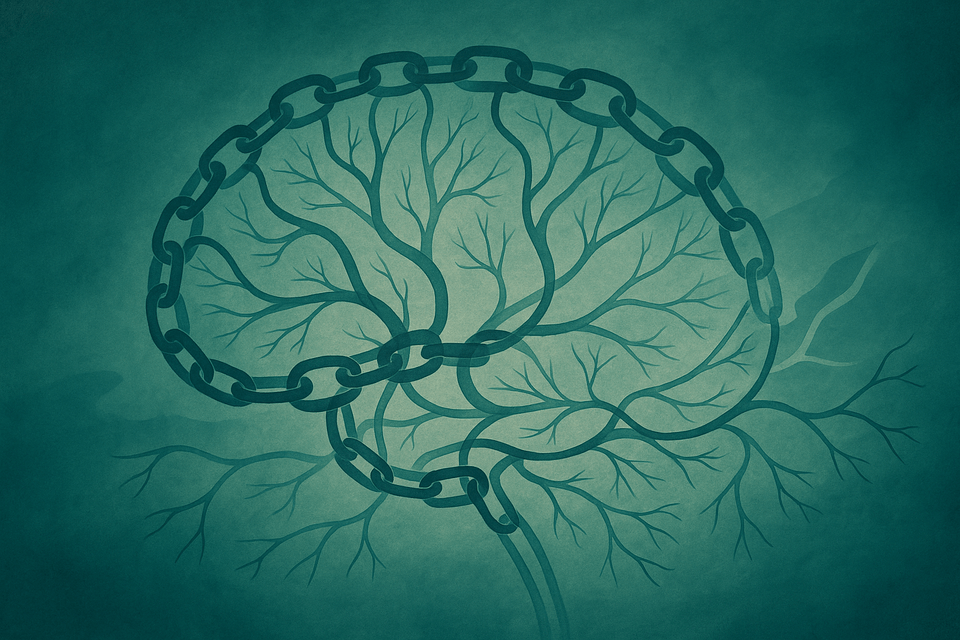
The Habitual Nature of Man
Every few years, another book arrives on shelves, promising transformation through repetition. Atomic Habits, The Power of Habit, The Subtle Art of Not Giving a F***. Each wrapped in a different aesthetic, each offering the same quiet promise: that if we change the little things, the big things will follow. The message feels familiar, almost ritualistic. Wake early. Exercise. Journal. Read. Meditate. Avoid distraction. Repeat. What was once the domain of monks and philosophers has become the language of productivity. Change, we are told, is a matter of mechanics — a choreography of small, well-timed actions.
Yet beneath this chorus of routine lies an unasked question: why?
Why is it that these diverse authors, writing across decades and disciplines, converge on the same conclusion? Why do they all insist that it is the small, repeated acts that shape destiny, rather than singular bursts of effort or will? Their prescriptions are similar, their tone confident, but their reasoning is often thin. They offer the pattern, but rarely the principle. They describe what to do, but not what it means.
This is not to dismiss their value. Many of these works genuinely help people organize chaos and anchor drifting lives. But their guidance often remains at the surface level of psychology and behaviourism. Habit becomes a “hack,” a way to manipulate one’s mind into compliance. The act of forming a habit is treated as an external intervention — a technique to enforce discipline, to automate success, to bypass the struggle of choice. The deeper philosophical question — why do habits work, and what do they reveal about human nature itself? — is left unexplored.
What if habit is not merely a productivity trick, but a structural truth about how consciousness operates? What if repetition is not the enemy of freedom, but its foundation? Every pattern of life, from the way we walk to the way we speak, rests upon the silent rhythm of habit. We are not born disciplined; we are born plastic, mouldable, capable of being shaped by repetition until what was once effort becomes instinct. To be human is to move between awareness and automation, between deliberation and flow.
The irony is that we often talk about habit as though it were something external — a program to install — when, in truth, it is the architecture of our being. Man is not simply a rational creature who occasionally forms habits; he is a habitual creature who occasionally awakens to reason. Our habits are the grooves of our existence — pathways carved by countless small choices, repeated until they no longer require choosing. What we call “discipline” is often just the domestication of impulse; what we call “failure” is often the misdirection of the same process.
Understanding this changes the question entirely. The point is not merely to form good habits, but to understand why we must — and what happens when we do not. The conversation, then, must move beyond slogans and systems into something deeper: the very nature of a being who learns through repetition, forgets through comfort, and finds meaning through the things he does without thinking.
The Architecture of Habit
If we wish to understand the power of habit, we must first understand the architecture of the mind. Human consciousness is not designed for constant decision-making. Every act of choice consumes energy, attention, and willpower. The brain, ever the economist, learns to conserve its resources by automating what it can. Repetition becomes efficiency. What is understood and rehearsed no longer requires deliberation. In this way, habit is not a moral virtue nor a psychological trick — it is an evolutionary necessity.
Each time we repeat an action, the neural pathways responsible for that action strengthen. The process becomes smoother, quicker, less conscious. This is as true for brushing one’s teeth as it is for responding to anger. The body learns what the mind once had to think through. The mind, freed from the burden of micromanagement, moves on to higher problems. What we call good habits are simply the automation of good choices — a way of embedding wisdom into reflex.
The formation of habit, then, is not merely about behaviour; it is about cognitive delegation.
By turning repeated good actions into instinct, we reduce cognitive load — the mental effort required to make decisions. Each habit is a form of outsourcing, a contract between the self and its future. Once signed, the conscious mind is relieved of supervision. You do not have to decide whether to exercise today; you simply do, because it has become what you do. The thinking self sets the rhythm, and the habitual self keeps the beat.
This migration of will from the conscious to the unconscious is what allows civilization itself to function. Imagine if every morning you had to relearn how to tie your shoes, read, or speak. Habit is the invisible scaffolding that upholds complexity. It allows us to move through the world with coherence. It grants us the freedom to focus on what is new, uncertain, or profound.
But this same gift carries a danger. The mind cannot distinguish between a habit that serves and one that enslaves. Once internalized, both operate with equal precision. The same mechanism that turns a morning jog into second nature can also turn procrastination, resentment, or distraction into a default state. The architecture of habit is neutral; it obeys the builder.
Here lies the quiet responsibility of awareness: to choose which patterns deserve permanence.
Each repeated act lays another brick in the structure of self. The architecture of habit, once complete, is the architecture of identity. You become not what you occasionally intend, but what you repeatedly enact. In that sense, habit is not simply a part of character formation — it is character formation. The pattern becomes the person.
To form good habits, then, is not merely to engineer productivity. It is to shape the terrain of being. It is to turn deliberate goodness into second nature, to encode discernment into reflex. The moral and the mechanical converge here: to live wisely is to design one’s automation.
The Missing Half of Self-Help
If the architecture of habit explains how we function, it still does not explain why we should. And this is where most modern guides to habit fall silent. They teach repetition, but not reflection. They celebrate efficiency, but not understanding. They promise control, but rarely ask what one ought to control for.
Without this deeper grounding, self-help becomes self-mechanization — a philosophy of optimization without orientation. We are told to wake at dawn, to meditate, to plan our days in perfect blocks, to replace bad routines with better ones. But rarely are we asked: toward what end? If the purpose of life is merely to become an efficient system, then one could say a well-oiled machine lives a perfect life.
The missing half of self-help is meaning. A habit repeated without understanding is no longer an act of will; it is a reflex. And a reflex, however efficient, is empty when it no longer serves a chosen purpose.
This is the quiet tragedy of the modern pursuit of self-improvement: the ritual has survived, but the reason has been forgotten. Many chase habits the way earlier generations chased salvation — hoping that consistency itself will redeem them. Yet repetition without reflection leads not to liberation but to automation. One becomes the sum of one’s checklists: productive, consistent, and quietly hollow.
The point is not to dismiss the value of routine. Ritual, after all, is one of humanity’s oldest forms of meaning. But rituals that endure are always accompanied by understanding. They do not simply automate; they symbolize. The monk who rises before dawn does not do so for productivity but for reverence. The artist who paints every day does not seek optimization but communion. The athlete who trains does not worship habit itself, but the horizon it points toward.
Modern self-help often forgets this spiritual dimension. It teaches the choreography of the act without the presence of the dancer. Yet it is the why behind a habit that transforms repetition into rhythm. Understanding why one forms good habits — why one seeks discipline, clarity, or compassion — gives meaning to the movement. It makes the act alive.
For the goal of good habit is not to erase thought, but to free it. To automate the trivial so that the essential can be seen clearly. To act well without thinking — yet still to understand why one acts at all.
Conscious Automatism
The ideal is not the absence of habit, but the awareness within it. To live well is not to be endlessly deliberate, forever calculating and re-deciding; nor is it to exist as a creature of reflex, enslaved to routine. The art of living lies in the space between — in conscious automatism, the quiet harmony of awareness and instinct.
Conscious automatism is the state in which one’s habits act on behalf of one’s understanding. It is what happens when reflection and repetition converge: the mind has learned, the body has remembered, and both move together toward the good. The act is automatic, but not blind. The self is disciplined, but not mechanical. It is a freedom born from design — the kind of freedom that does not require constant self-management because one has already chosen the kind of person one wishes to be.
To reach this state requires a paradoxical humility: we must first submit to repetition before we can transcend it. Every discipline begins as imitation — the pianist drilling scales, the philosopher rereading old masters, the athlete rehearsing the same motion a thousand times. But over time, repetition refines into presence. The act no longer demands conscious effort; it becomes expression. The fingers move, the mind flows, the being acts — effortlessly aligned.
Yet even this harmony must be held lightly. Conscious automatism is not a permanent state but a posture — a way of moving through the world with both stability and sensitivity. It asks for discernment: the ability to know when to break the pattern. A good habit is a tool, not a law. It serves until the moment reality changes — then wisdom must reclaim the wheel. Awareness must be ready to interrupt automation when the context demands something new. This is where most self-help formulas fail: they teach us how to install habits, but not how to evolve them.
The mastery of life, then, is not to be ruled by habits, nor to reject them, but to understand them — to see them as extensions of intention, scaffolding for freedom. Habits should support consciousness, not replace it. They should act as gentle servants, not silent tyrants.
When the conscious and the automatic coexist, the human being moves through the world with grace. Thought and action no longer compete; they cooperate. The trivial is handled by habit, the essential by awareness. This balance grants a rare kind of peace — the peace of a mind unburdened by noise, yet awake to the moment.
In this way, the habitual nature of man is not his weakness but his design. It is the mechanism through which chaos becomes coherence, through which intention becomes being. The goal is not to escape habit but to elevate it — to build a life where good choices flow as naturally as breath, and where every automatic act still carries the echo of understanding.
To form such habits is to build not just efficiency, but harmony. To live with conscious automatism is to become whole — deliberate in creation, effortless in motion, and fully alive in the rhythm between them.


